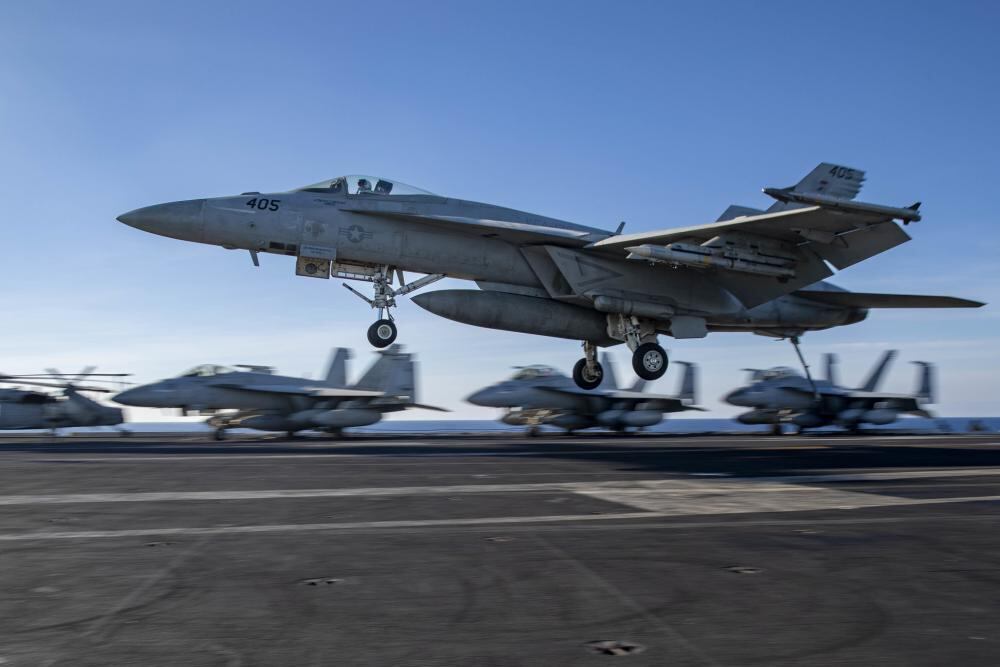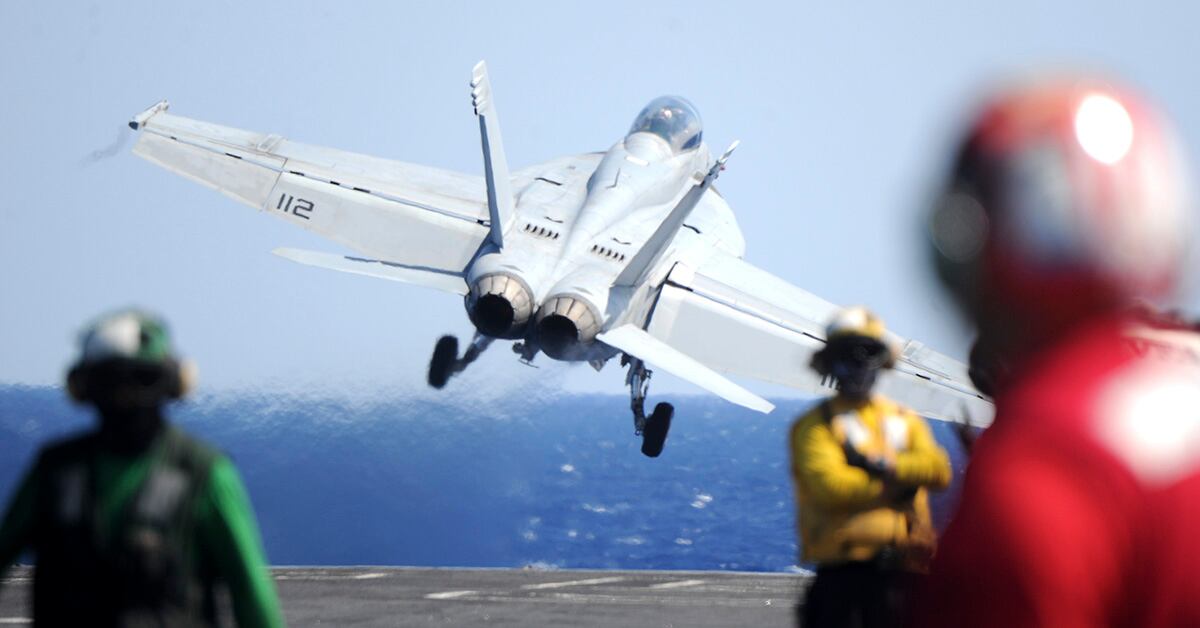The Navy’s F/A-18E/F Super Hornet fighter aircraft are not aging as well as the F/A-18C/D Hornets and other Navy aircraft, according to a new Congressional Budget Office report.
Although Super Hornets currently have a higher mission-capable rate than Hornets, when the two airframes are compared over time, the Hornets have been more reliable, according to CBO researchers.
The Super Hornets were introduced to the fleet in the mid-to-late 1990s, roughly a decade after the Hornets, but the Super Hornets have had lower availability rates — that is, the percentage of time an aircraft is capable of being flown for training or missions — compared to Hornets at similar points in their life cycles.
In the mid-to-late 2000s, after 10 years in the fleet, the Super Hornet had roughly a 41 percent availability rate, compared to the 59 percent availability rate of Hornets after a decade in service.
“When compared with F/A-18C/Ds of the same age, the Super Hornet fleet has had lower availability rates,” the report said. “For example, Super Hornet availability at age 10 was about 18 percentage points lower than F/A-18C/D availability at age 10 and is comparable to F/A-18C/D availability at age 20. These findings suggest that age has had a more adverse effect on Super Hornets than it did on F/A-18C/Ds.”
The Navy said many factors contributed to this disparity, including the “greater levels of galvanic corrosion arising from the greater use of composite metals in Super Hornets.”
RELATED

Overall, the report found that availability rates for both Super Hornets and Hornets fell significantly in the mid-2000s and mid-2010s. In 2014, the Super Hornet’s availability rate dropped to 43 percent, while the rest of Navy aircraft experienced a 58 percent availability rate.
That gap has closed in recent years, although the report notes the decline of other aircraft isn’t as “steep” and that the decline started later. As of 2020, the Super Hornet’s availability rate hit 42 percent, in comparison to the 44 percent availability rate for other Navy aircraft.
The report also found that Super Hornets “generally” possess lower availability rates than their Air Force attack and fighter counterparts, like the F-15E Strike Eagle, at the same age. This could be due to the fact Air Force aircraft don’t operate on aircraft carriers and therefore aren’t exposed to the “related stresses” and saltwater corrosion that Super Hornets encounter, the report said.
Additionally, the report noted that Super Hornets typically “have flown more hours per aircraft per month than have Air Force fleets in the same age range.”
It’s unclear whether the availability of the Super Hornets will stabilize like the F-15Es did between the ages of 10 and 25, or whether they will continue to decline, as is the trend with many fighter and attack aircraft, the report said.
“Because the Super Hornets are relatively new, [the Department of the Navy] might be able to take some actions to increase the aircraft’s availability rate,” the report concluded. “For example, DoN could replace existing parts with new ones that have been redesigned for greater reliability or longevity, or it could devote more resources to routine maintenance (such as keeping on hand a more robust supply of spare parts).”





